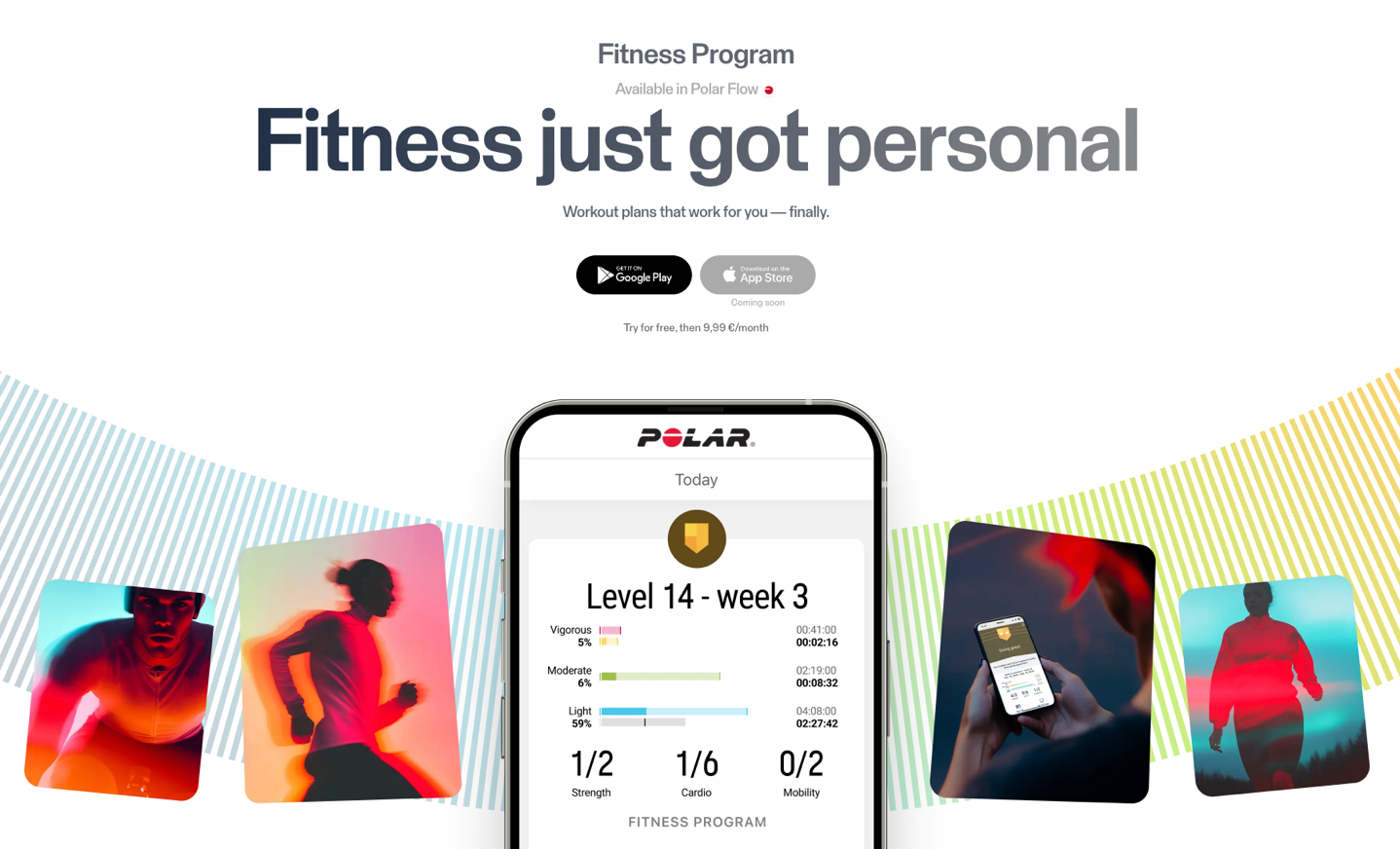
Polar looked out over the landscape of burning carnage after the Garmin Connect+ launch two weeks ago, turned to what I presume was also-Finnish endurance company Suunto standing next to them, and told them to ‘hold my beer’, before running towards the internet on fire.
The new offering from Polar, called Program Fitness Program, aims to offer customized training plans and daily workouts, based on your current fitness and health metrics. It’s effectively an extension of their FitSpark feature introduced in 2019, but now with more specificity and longer range goals. Up until now, FitSpark (available on countless Polar devices for free), would give you daily cardio-zone focused workouts and various core workouts. Meaning it wouldn’t tell you to run 10 miles/km at a hard pace, it would instead tell you to go do a workout in Zone 4. And more specifically, it only told you what to do today, not what you might be doing later in the week. This changes with the new paid Fitness Program, where you’ll now get further ahead guidance, as well as details on what ‘level’ you are, within this progression range.
To be fair to Polar, this approach is different than Garmin’s. Polar’s approach aligns more with the ‘coaching/training plans as a paid service’ that other competitors like Fitbit offer. Though, as I’ll discuss later, that may not be super competitive in 2025.
So, let’s take a look at it, and then, how it compares to the overall paid subscription landscape.
Fitness Program Explained:
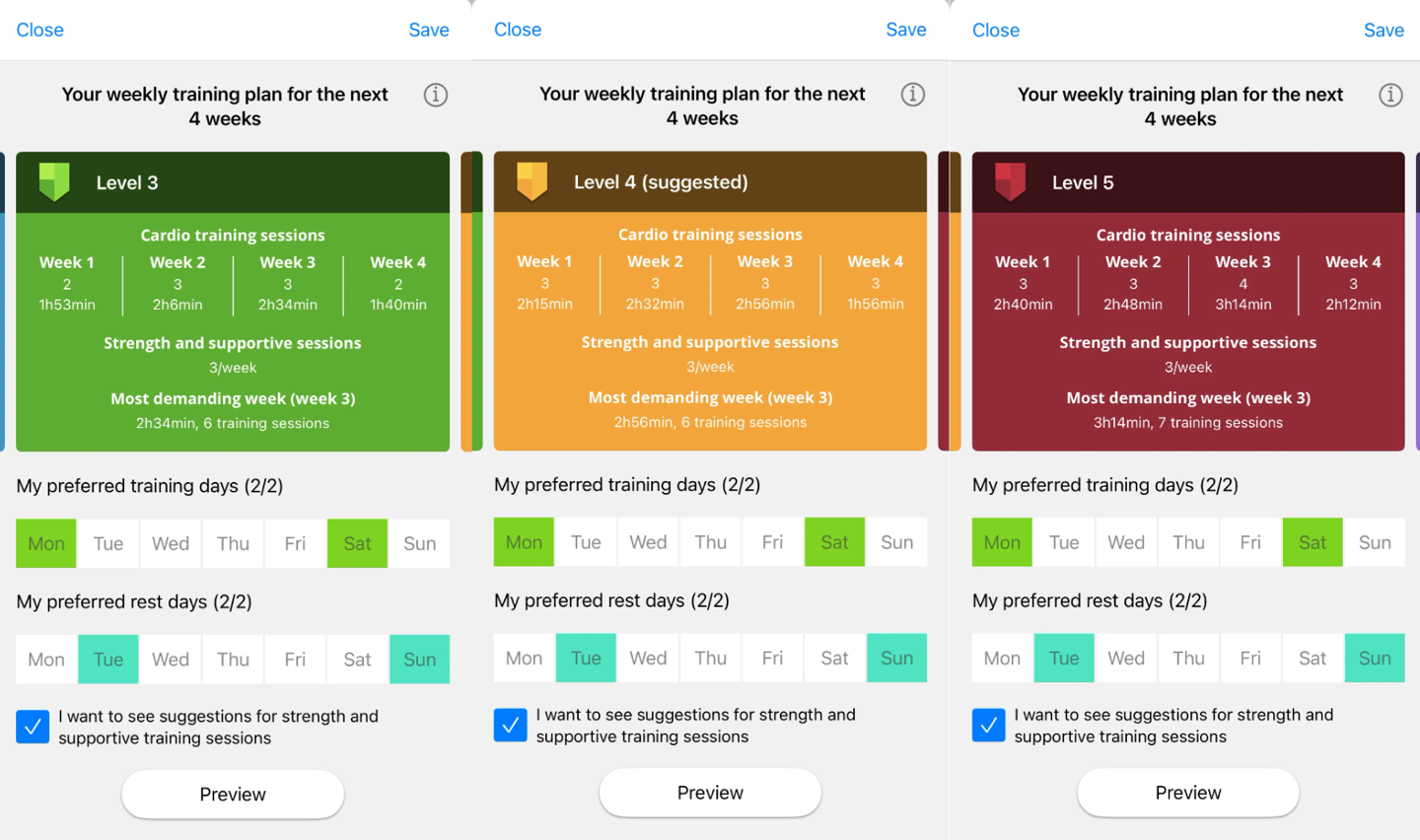
Upon launch, the Fitness Program will only be available on Android, with iOS coming later this year. Polar says that’s due to technical reasons, rather than anything else (as I’d assume like virtually all of their competitors, the majority of their customer segment is probably on iOS). The company is also offering a 14-day trial, for those that want to give things a whirl. Oh, and it’s only available in Europe at launch. The US and other countries will get this at some point in Q2.
Speaking of which, the company says that “The new Fitness Program service does not affect the development of the free Polar Flow service in any way. Polar is actively working on many improvements and will continue to roll out new features to all users.” Of course, practically speaking, just like when Garmin says the same thing, we know that’s not really true. Still, Polar tries to prove that by noting the release of Polar Flow dark mode this week, with more features to come.
In any case, as for the Fitness Program feature, it’s found within the Polar Flow app, and the first thing to do is to confirm the onboarding pieces. Polar pulls this automatically from your training history in Polar Flow, assuming that exists. Else, you can fill it in manually (these are not my numbers, but screenshots provided by Polar).
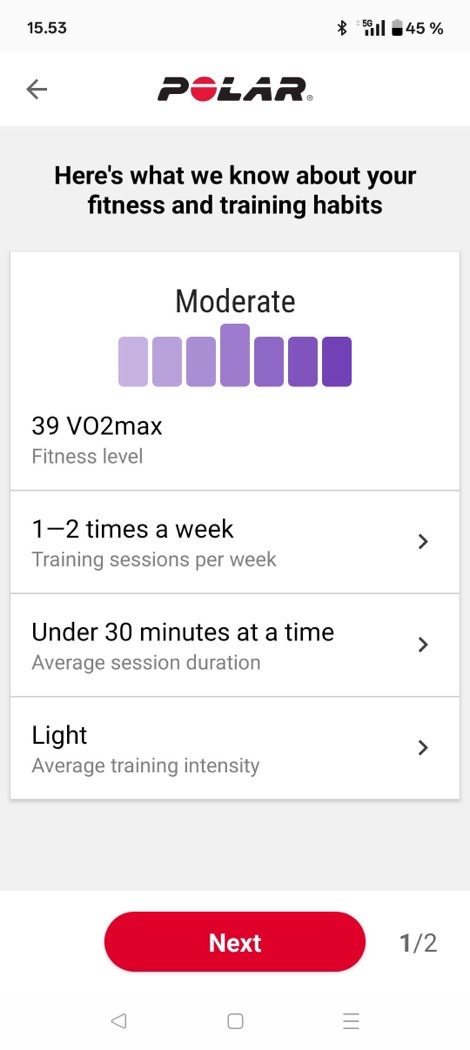
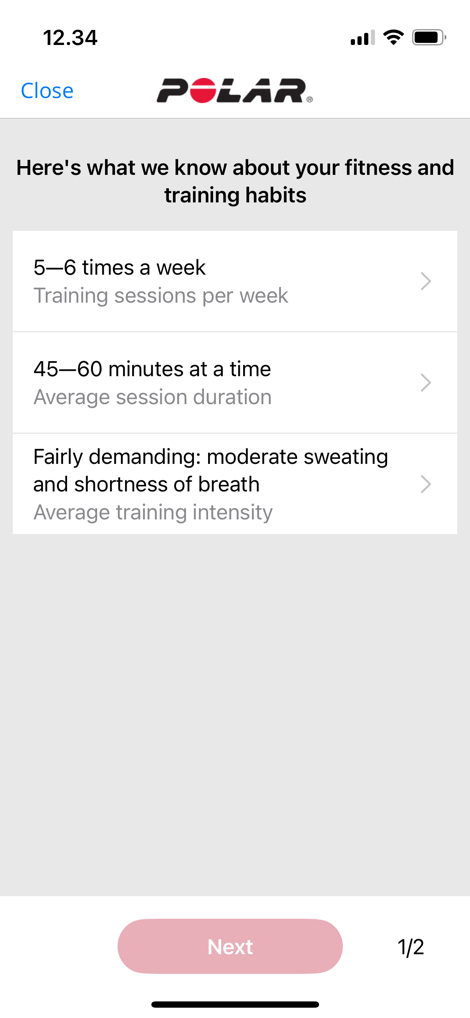
The next piece is selecting your preferred training days, and preferred recovery days. After which, you’ll be suggested a level. There are 20 different levels that you can work your way up. Your initially suggested level is based on your historical training data, though you can change it higher or lower.
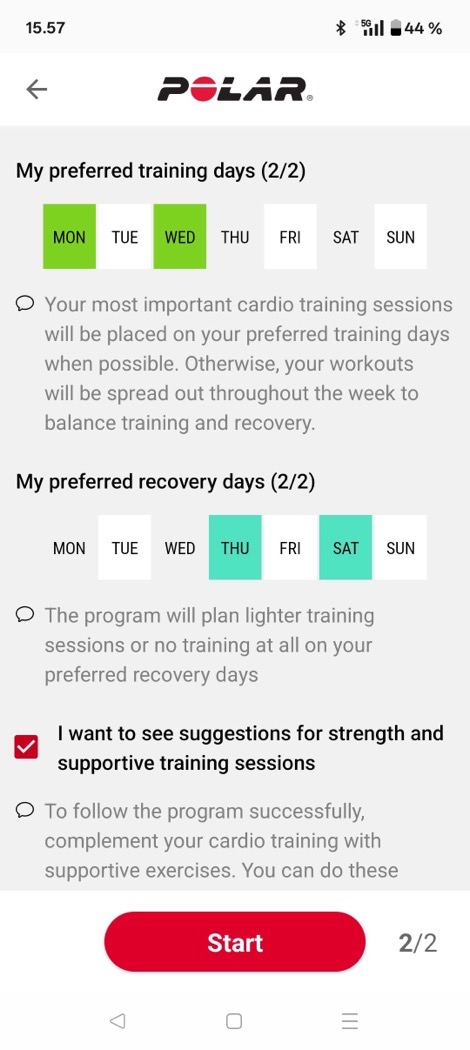
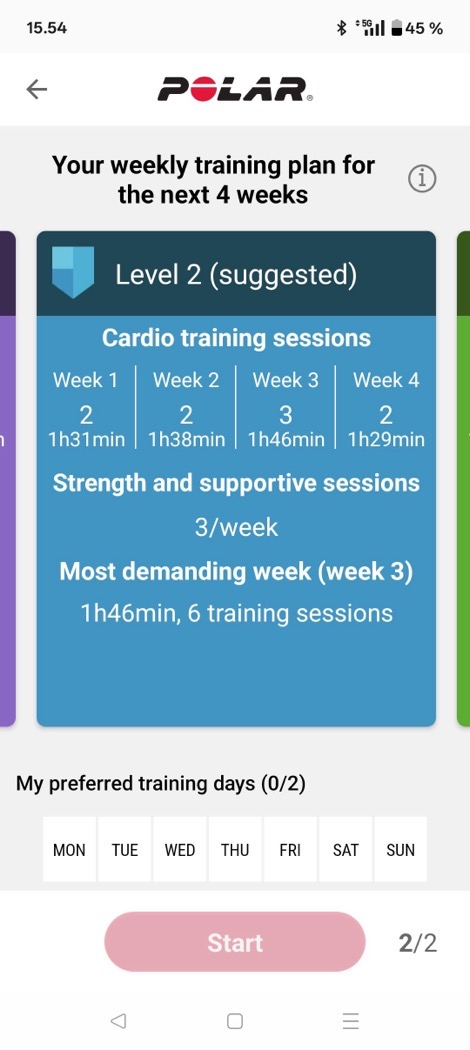
From here, it’ll show you a preview of the pain & suffering that’s upcoming (left), and, here’s the calendar view once you’ve started the program:


At this point, you can begin the program immediately, or defer it, starting next week.
Now, once you’re in the program, it’ll start suggesting workouts to you, based on your daily metrics. This is akin to what Garmin & Fitbit do, which will adapt to things like poor sleep, or unexpected training load (e.g. when your friends convince you to go out for a chill 1hr ride, that becomes a 2hr hammer time session).

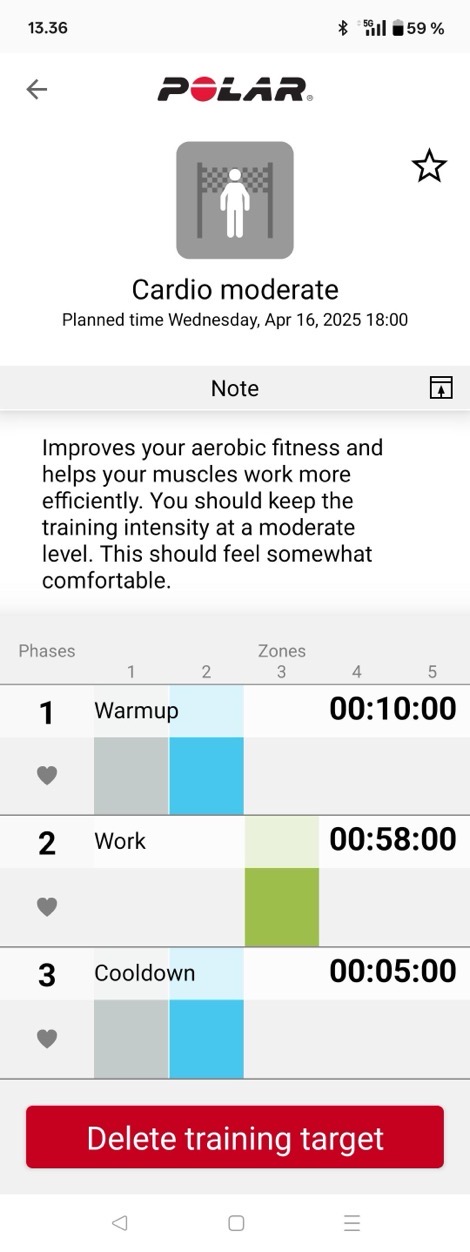

As you can see, these do include real human videos for some of these – a notable difference from Garmin, which doesn’t have video guidance in their free program. Garmin does have animations for strength workouts, but those aren’t automatically assigned, as strength workouts are still manually selected.
Inversely though, all of Polar’s guidance is specific to duration/HR zone. Meaning that it’s not going to tell you to run 10KM or cycle at 250 watts (whereas Garmin will tell you both). This falls in line with Polar’s past FitSpark efforts, which are purely time in zone based.
These workouts will be pushed automatically to your watch, just like past Polar structured workouts would be.
As you complete workouts you’ll work your way up in levels, as well as get summaries for each week.
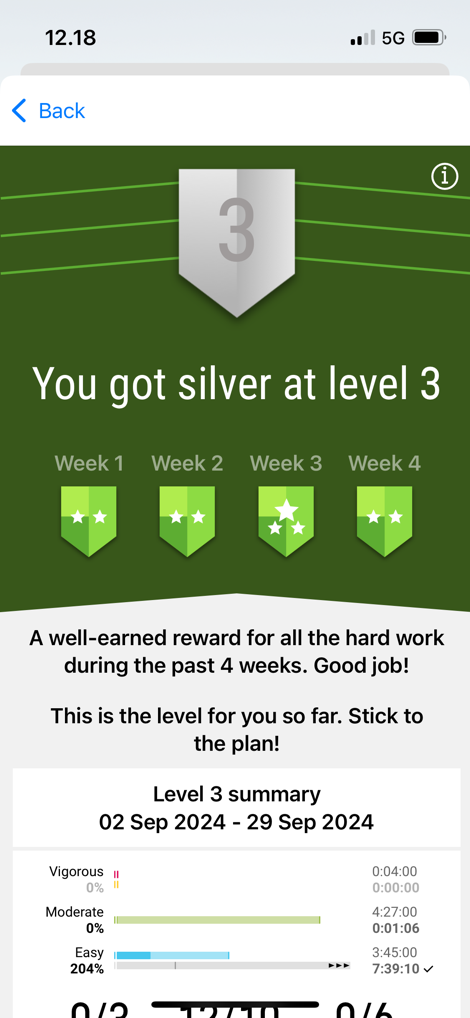
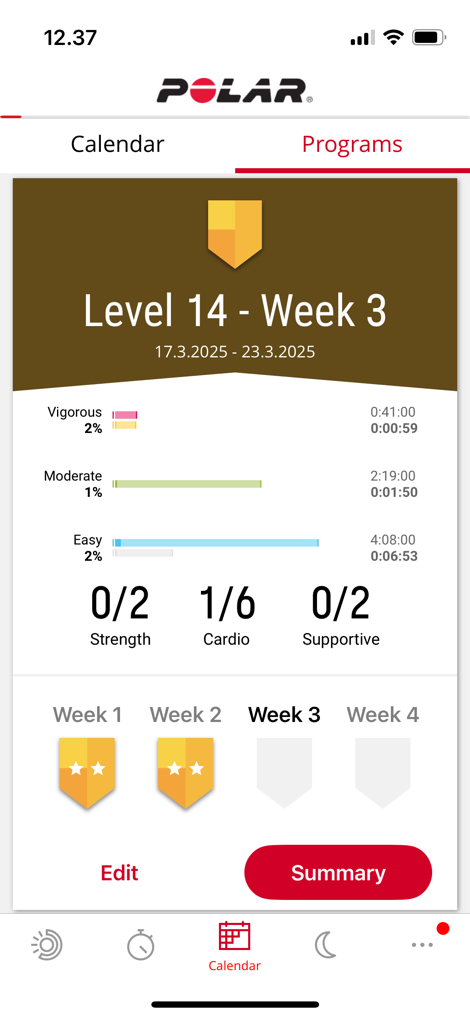
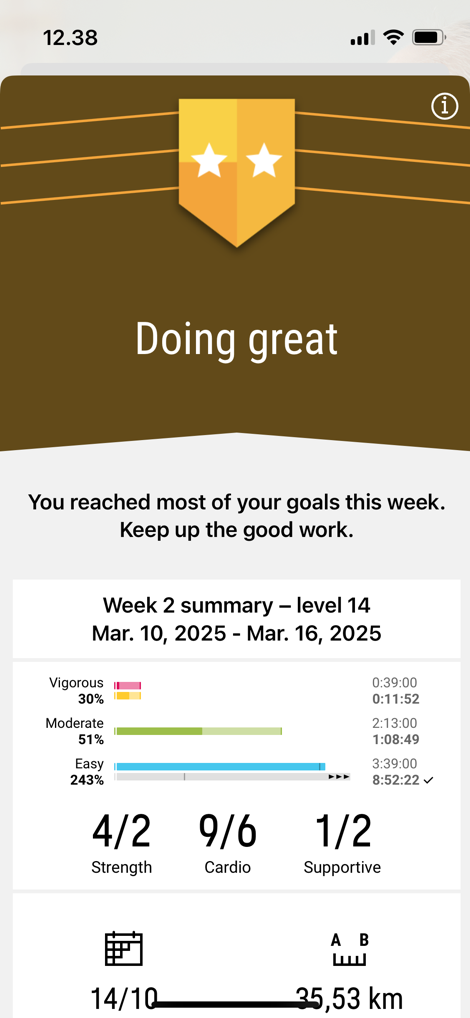
Likewise, if you scroll down you’ll see your cardio load status, as well as other health metrics:
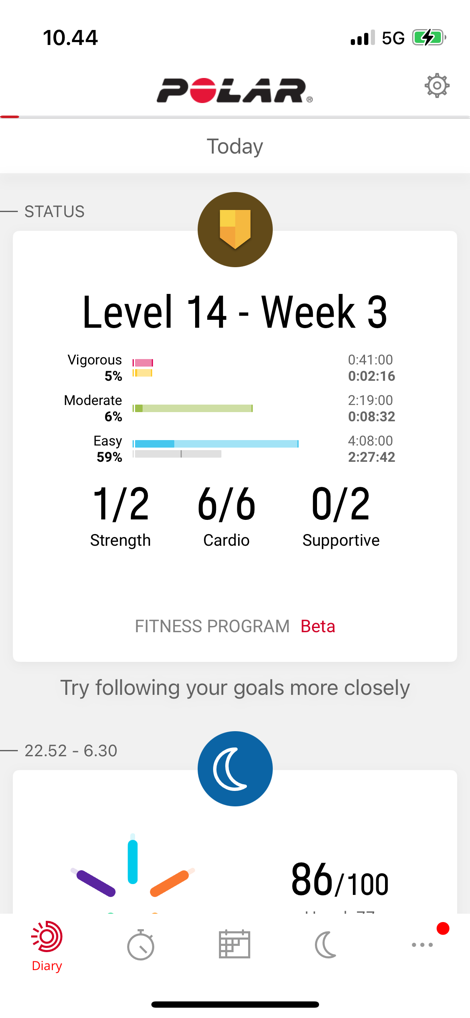
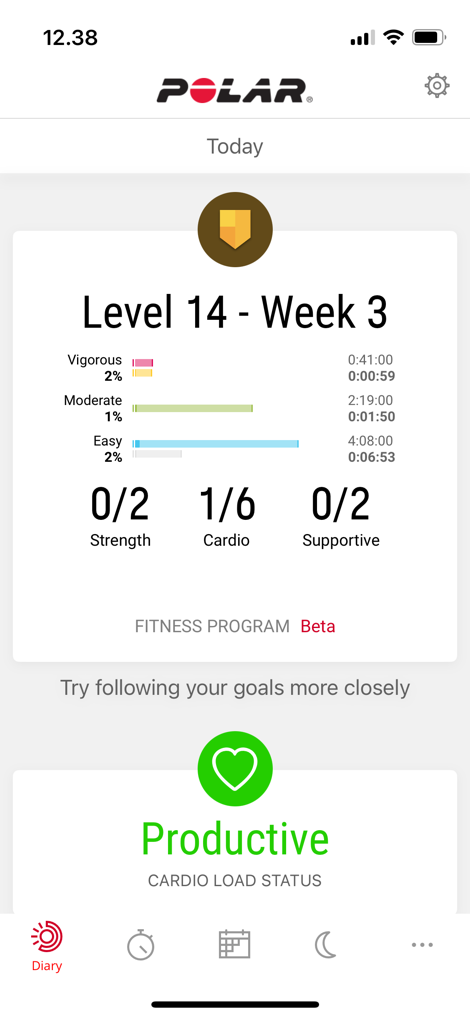
Polar says that the goal here is simply fitness improvement. Meaning as part of the onboarding you don’t select a specific goal like you might with a marathon time, or other distance-based metric. Instead, it’s similar to Garmin’s Daily Suggested workouts in that it’s always trying to improve fitness.
Whereas Polar also has their Running Plan feature (still free in Polar Flow), that is focused on a given running event/distance, and guides you towards that. Likewise, Garmin has the same if you put a running event/race on your calendar, then their Daily Suggested Workouts automatically change to guide you towards that specific goal.
With Polar, you can end the program at any time as well. They’ve got an overview of the platform here, and a much larger FAQ here (I really do appreciate Polar’s continued commitment to large FAQ pages and documentation).
Competitor Comparisons:
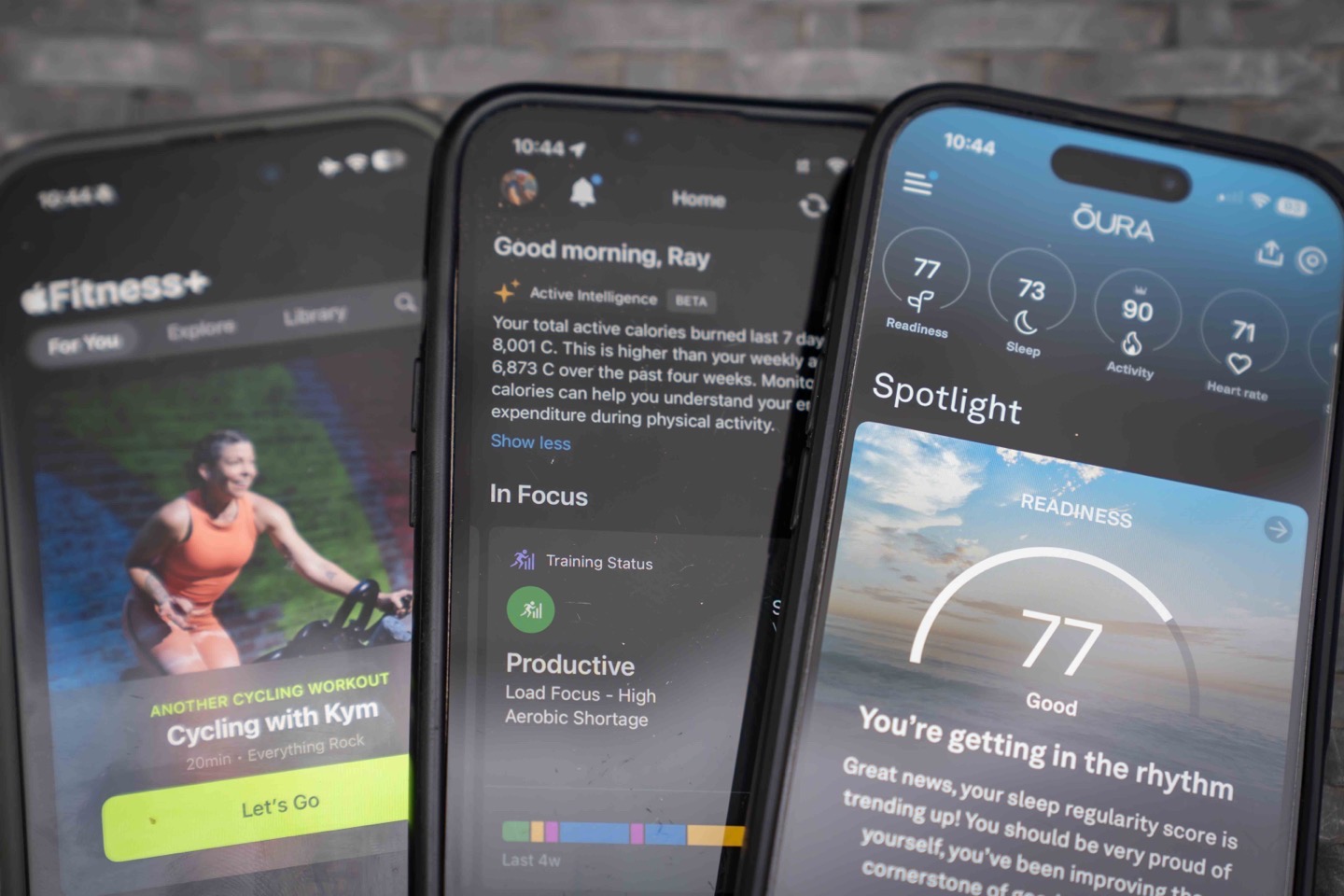
So, before be get into the details, how much will this set you back? 9.99EUR/month, with no annual plan at launch. Polar says they’re aiming to offer an annual plan later in the year, which will probably run about 70-80EUR/year, vaguely inline with other platforms from Fitbit, Apple, and Garmin.
Of course, the challenge with those other platform comparisons is that there isn’t a straight direct comparison from another hardware vendor. While Polar can point to various random smaller app-only competitors, I struggle to see validity in that comparison, given that people have paid a substantial premium for a Polar device. For example, their Polar Grit X2 Pro is priced at $749.
Nonetheless, here’s roughly where things stand on competitor offerings. I’m using annual prices, because frankly if you’re using one of these programs for any length of time, you’re paying annually:
Apple Fitness+ $79/year: – But this is really quite a different product. Apple’s offering is less about customized workouts, and more about a huge coached workout library with real-world humans leading those sessions across numerous sport types. In other words, more akin to Peloton than Polar. This also sets aside the fact that the subscription is even cheaper with Apple’s bundled subscription services, and has a 6-month trial. Point is, I don’t really see this as a direct comparison.
Garmin Connect+ $69/year: Again, these features are really quite different. In Garmin’s case, these are about pretty random app bonus features, rather than anything structured. That’s because Garmin provides for free their entire Daily Suggested Workouts pieces already (covering running/cycling/walking), with the full library of running/cycling coaching and strength workouts for free. And like Polar, all of this accounts for your sleep/HRV/activity/stress/etc data. Said differently, Garmin is literally giving away almost to a T, exactly what Polar is charging for. This is by far the biggest struggle Polar has.
Fitbit Premium – $80/year:This is probably the closest to what Polar is offering, in that the Fitbit is providing added features around run coaching, personalized workout programs, as well as connectivity with their Safety Signal feature on cellular connected devices. There’s also video/audio workouts and plenty more. Last fall (2024), Fitbit rolled some of their previously paid data features (like Daily Readiness) back to the free tier. So from a data standpoint, Fitbit basically opened all that up already to everyone for free.
Oura – $69/year: Again, like some of the other examples here, this is vastly different to what Polar’s doing. But, I wanted to include it as a reference point. Oura is more about wellness metrics (e.g. sleep/etc…) than it is about structured workouts and training goals. Most of what Oura provides at a data level, Polar does do for free. And like Polar, Oura also charges for devices too, in addition to the subscription fee. Still, these days I see Oura as the sleep/health tracker for people that don’t have a different smartwatch device. I see virtually no value if you’ve got a smartwatch already.
Whoop – $239/year: Yet again, also different. Substantially different – in Whoop’s case, you pay for the service, not the device. The device is ‘free’, including replacements whenever Whoop gets around to releasing a new devices (it’s been nearly 4 years). Further, Whoop’s platform, like Oura, is more about tracking your stats than it is specific structured workout & plans. Yes, there are a handful of structured strength workouts, they’re more of an afterthought than anything notable. Instead, Whoop is all about giving you data to balance workouts vs daily health metrics. Point is, kinda totally different.
In my discussions with Polar about this, they noted that various 3rd party apps (non-device manufacturer ones) had similar pricing to Polar’s Fitness Program, but lacked the integration with the Polar Flow platform for all the data that it can leverage (such as your sleep, activity levels, etc…). And that’s a fair observation, those 3rd party apps would indeed lack that kind of data, at least Polar’s version of it. Some of them can connect to things like Apple Health or other data sources to gather that however.
But to me, that’s not really there biggest issue. The biggie issue is simply Garmin gives everything away everything Polar is charging for. Compounding matters, Polar (like Garmin) put eggs in the ‘free’ training plans and such basket 6-10 years ago, whereas Fitbit never had training plans in the free basket. Instead, Fitbit acquired Fitstar a decade ago, and converted that into the beginnings of their paid program.
In other words, it’s about expectations and historical norms. Both Garmin and Polar had often touted these free platform aspects as fundamental to why you paid a premium for their devices. Now, these companies are trying to change that dynamic. While both of them promise this won’t impact development on their free features, nobody seriously believes that. Of course it will – arguably even more for Polar, given the much smaller pool of developer resources the company has.
Going Forward:
Polar’s new Fitness Program isn’t bad. Functionally speaking, it seems perfectly fine. Timing-wise though, it couldn’t come at a worse time. Had Polar launched this 3-5 years ago, I don’t think they’d seen any pushback. After all, Fitbit and others were essentially doing the same thing with paid coaching-like additions. But this isn’t 2020 anymore, and people are increasingly wary of ever-increasing subscriptions pulling away features they paid for with higher-end device purchases.
Ultimately, I keep thinking back to the one Polar thing that I think they could have massive success with (both product sales, and financially, including even a subscription if they wanted), which is their Polar 360 band that they announced a year ago and have been rolling out with business partners. That band essentially acts like a Whoop strap, but tied to the Polar Flow platform. It’s what countless people have been asking for, for years.
Frankly, it’s beyond baffling that Polar is trying to sell this device in relatively small quantities to corporations, rather than take what all signs appear to be an awesome offering, direct to consumers. They have numerous ways they could sell that device to consumers, including a one-time fee (as they do today for other Polar devices), or a one-time fee + subscription (like Oura), or a subscription-only model (like Whoop). All of which would be nearly guaranteed to take in far more revenue and profits than the Polar Fitness Program will. As I said before, short of the Polar 360 band catching fire on my wrist, all it has to do is what the existing Polar Flow platform already does, and they have a winner.
But hey, what do I know.
With that – thanks for reading!


0 Commentaires